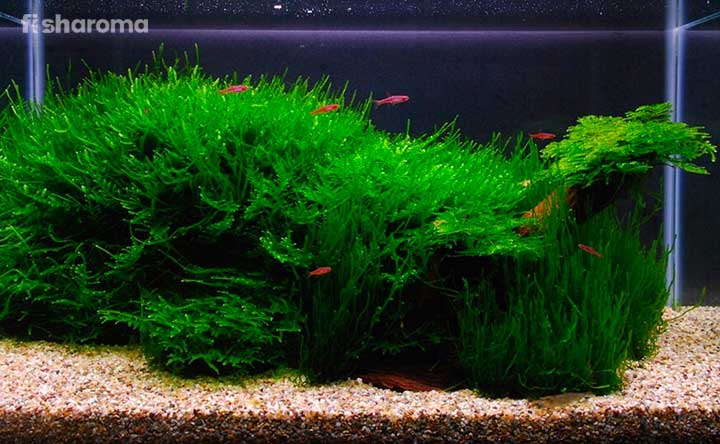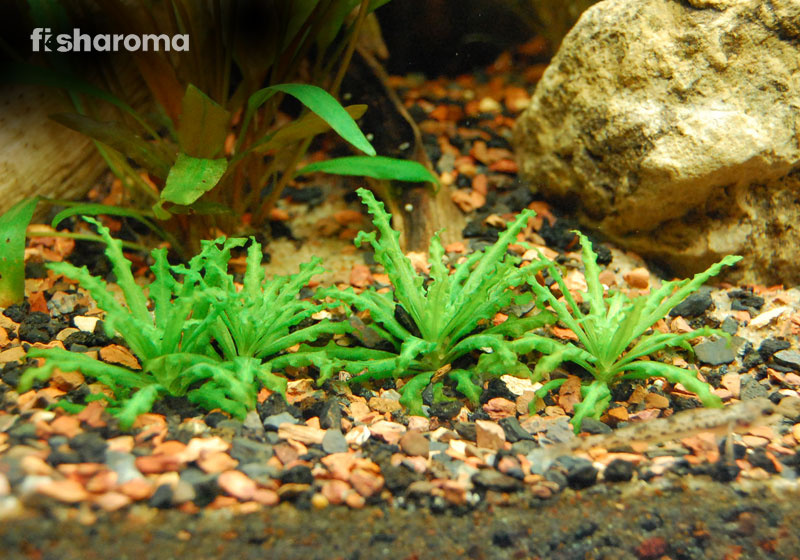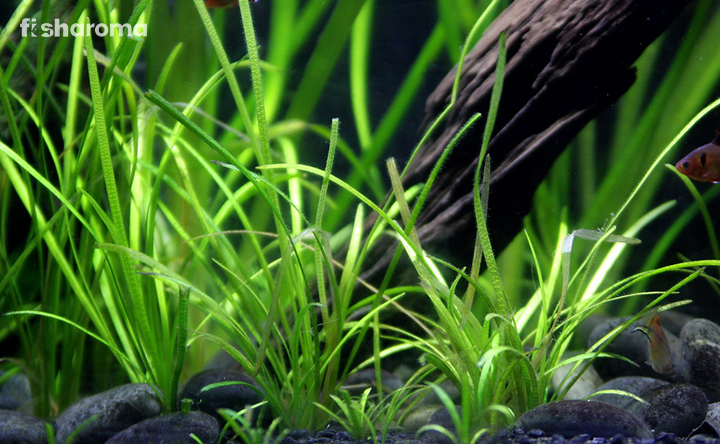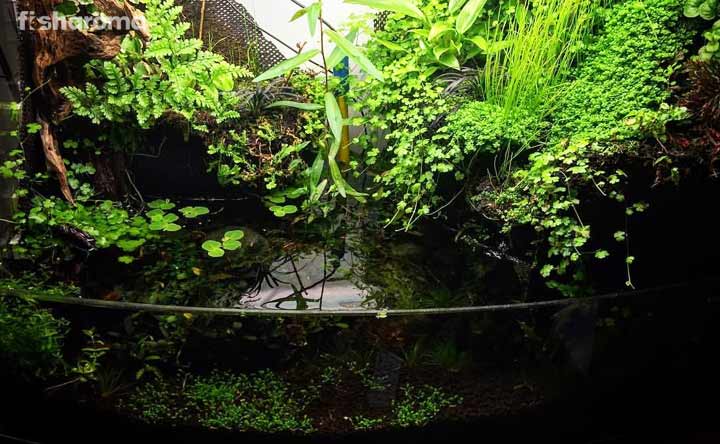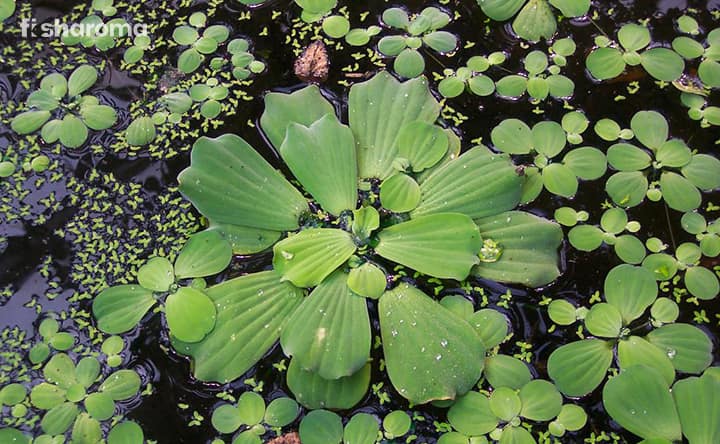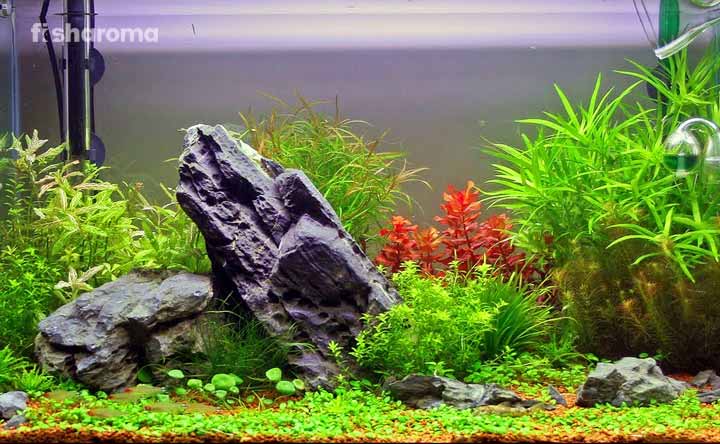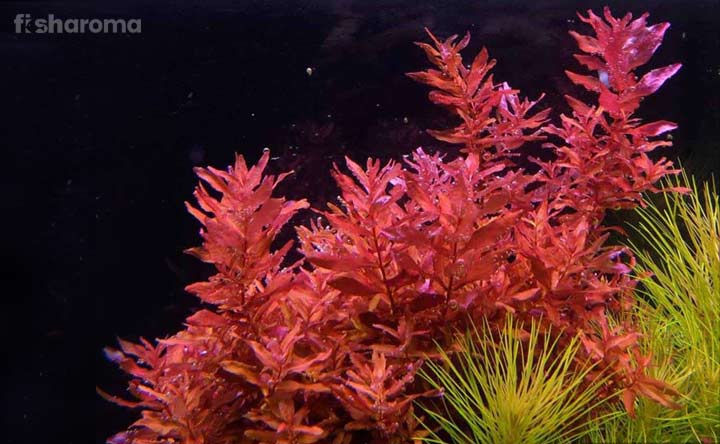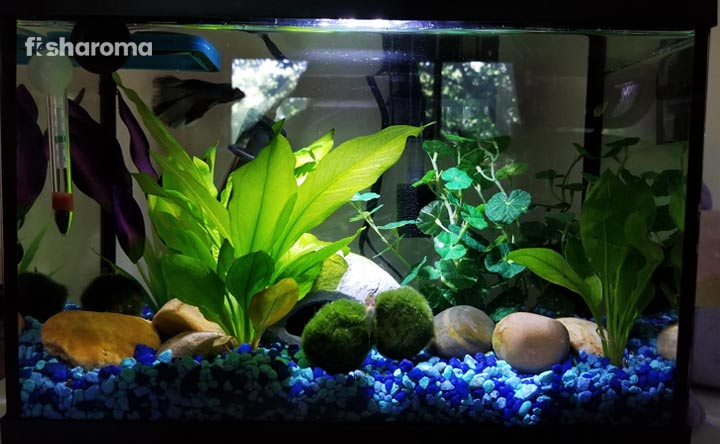Anubias Nana – The Complete Care Guide of this Aquatic Plant
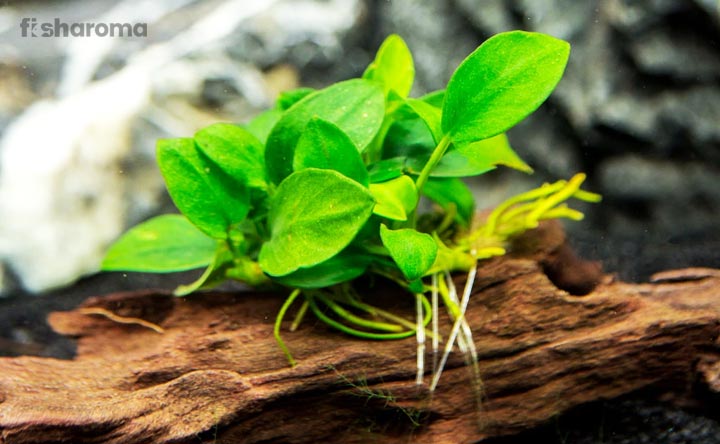
- Origin and Habitat of Anubias Nana
- Appearance of Anubias Nana
- Types of Anubias Nana
- Benefits of Anubias Nana
- Tank Requirements for Anubias Nana
- Water Type for Anubias Nana
- How to Plant Anubias Nana?
- Propagation of Anubias Nana
- How to Take Care of Anubias Nana?
- Compatibility of Anubias Nana
- Difficulties in Rearing Anubias Nana
- Things to Look While Buying Anubias Nana
Have you seen any large aquatic plant that has beautiful broad flowers? Anubias Nana is a short length thick width freshwater plant with lush flowers. This plant grows alongside the rivers of Western Africa. If you are finding a useful plant for your tank which will oxygenate and clean the water of your tank. A thorough care guide on this aquatic plant will help you plant Anubias in your aquarium.
Quick Details on Anubias Nana
Anubias Nana is a hardy plant but daunting for the beginner aquarists. We will know more about this plant, and before going through the complete care guide, take a glimpse of the quick details mentioned on the table.
| Scientific name | Anubias barteri var. nana |
| Family | Araceae |
| Plant Size | 7.5” (2.54 cm) |
| Tank size | 10 gallons |
| Growth Rate | Slow |
| Care Level | Easy |
| Lighting | Low-Moderate |
| Water Conditions | 72-82°F, pH 6-7.5, 3-8 KH |
Overview
Anubias is a slow-growing plant which is easy to propagate. Another name of this plant is Dwarf Anubias. It grows in partially submerged areas. It is usually planted in driftwood. Most of the freshwater scatterer fish like to lay eggs on the broad leaves of Anubias. You can find this plant in $5.
Origin and Habitat of Anubias Nana
Native to the western region of Africa, Anubias Nana was first found in 1857 by Heinrich Wilhelm Schott. This plant is found in the forest bogs, tropical rivers of Africa and shores of the small streams and rivers. This plant is seen during the time of the flood. Anubias is also seen in Nigeria and Cameroon.
Appearance of Anubias Nana
Anubias is usually planted in driftwood. The size of the plant is 7.5” (2.54 cm). It is a short plant and does not grow much. The leaves of the plant can grow up to 2.5” (6 cm). They are light-green shaded. The lamina of the leaves has feather-like venation in the downward side. The leaves of this plant are oval green and glossy.
Moreover, the leaves are covered in cuticle which strengthens the leaves. The diagonal lines run from the central vein to the outer edge. The flowers of this plant are plain creamy-white similar to Calla Lily. The leaves and the flowers of this plant can live for several weeks. The white roots of the plant anchor the stems.
Types of Anubias Nana
There are several varieties of Anubias Nana, and all the plants belong to the same family. Take a look at those varieties:
- A. barteri var. angustifolia
- A. barteri var. barteri
- A. barteri var. caladiifolia
- A. barteri var. glabra
- A. barteri var. nana
- A. afzelii
- A. gigantea
- A. gilletii
- A. gracilis
- A. hastifolia
- A. heterophyllai
- A. pynaertii
- Araceae
- Philodendron
Benefits of Anubias Nana
Not only for a hobby, but Anubias is also kept in the fish tank for various reasons. There are several benefits of keeping this freshwater aquatic plant in the aquarium. Some of them are described below:
- Anubias plant keeps the water of the tank clean.
- It circulates the oxygenation process.
- Some fish lay eggs on the broad leaves of Anubias.
- Nana is a right hiding place for shy fish, and some fish even take rest behind the bushes of this plant.
- It improves the chemical filtration in the tank.
- Anubias helps in controlling nitrate level, oxygenating water and removing pollutants.
- Anubias Nana also promotes the security of the substrate in the aquarium.
- This plant saves different species in the tank from boisterous fish.
- It also creates shaded areas in the tank for the nocturnal species.
- Anubias enhances beauty by making the ambience of the tank green and eco-friendly.
Tank Requirements for Anubias Nana
In the wild, Anubias is seen planted along the river banks or in shallow water. While keeping it in a tank, some factors are needed to be followed:
Tank Size
You can keep this small 7.5” (2.54 cm) plant in a 10-gallon aquarium.
Lighting
It needs plenty of access to light for the process of photosynthesis. So, you need to fix LED light on the hood of the tank and keep the tank in front of sunlight for some hours in a day.
Substrate
The substrate for the plant should be muddy and soft, which will help grow the roots of the plants quickly. Anubias thrives in a fine-grained substrate because it allows the roots to grow fast and anchor them in a proper place.
Filtration
Anubias is a natural filtration plant. However, for the fish and other species in the tank, the filter is needed to be installed, so the waste elements in the tank are easily flushed out.
Water Type for Anubias Nana
The water of the tank should be slightly acidic and Lukewarm. Anubias is always comfortable in dwelling at warm water. You can also keep a heater in the tank to warm the water of the aquarium. Have a look at the other factors that you need to follow to set the water in the tank.
Temperature
The water should be warm, and its temperature should be 72-82°F (22-28°C).
pH Level
The pH level of the water should be 6.0-7.5.
Hardness
The hardness of the water should be 3-10 dGH.
Replacement Process
About 5-6% of water is needed to be changed every week to maintain the hygiene of the tank and water quality. When you add a fresh batch of water, check the temperature, hardness and pH level of the water.
Cleaning Method
Never use harsh soap that is full of chemicals. Use lukewarm water and mild liquid soap to clean the aquarium. Purchase a gravel vacuum cleaner like Python Pro-Clean to clean the gravels and rocks of the tank.
How to Plant Anubias Nana?
Anubias Nana is needed to be planted in an aquarium. You should not use it as a floating plant for the long term because it is not a floating plant like Java fern. You can plant Anubias in the substrate or attach it to the decorations of the tank. The roots of this plant may grow long by wrapping around other objects of the tank. Never plant Anubias in shaded areas as it needs light for the photosynthesis process. You need to follow a few factors to plant Nana.
Planting Anubias on Driftwood or Decorations
Anubias is used for aqua scaping by attaching it on driftwood. You can do this easily with some simple steps:
- Use fine cotton or a clear fishing line and place the plant on driftwood or other decoration.
- Gently tie the plant with the driftwood by using the cotton.
- Anubias can easily fix itself on the driftwood, and the same process can also tie its roots.
- When the roots grow strong, the plant will automatically tie itself with the decoration or the driftwood.
- After a few weeks, remove the cotton thread or the fish line one the plant holds the base.
Planting Anubias on Substrate
While planting Anubias Nana on the substrate, remember a few factors that will help you plant Anubias on the substrate of the aquarium.
- Collect rich substrate which is rich in nutrient and minerals.
- Cut the stem of Anubias and burry it on the substrate.
- Use sterilized scissors to cut the fully-grown plants.
- The plants will grow from the small stems, and it will take a few days to produce new leaves, as it is a slow plant.
- You can add fertilizers and CO2 supplements for the proper growth of the plant. Lots of light is necessary for the healthy growth of the plant.
- Never bury the rootstock entirely in the substrate because it may fully rot if it is buried fully. The roots should partially bury into the substrate.
Keep two plants at least 2” apart from each other because too many plants can make the space overcrowded.
Propagation of Anubias Nana
Anubias is notoriously a slow-growing plant with broad leaves that grow from the rhizome of the plant. The mature rhizomes are cut from the parent plant, which is divided along with the dormant buds and the entire rhizome. The little plantlets grow from the stems.
Anubias can also be cultivated from the seeds that are buried in the substrate. The standard lighting and CO2 supplements and substrate fertilizer can help the fast growth of the plants. Maintain the cleanliness of the tank; otherwise algae may grow on the leaves of Anubias. This plant can grow in the substrate, rocks, decorations and driftwood.
How to Take Care of Anubias Nana?
Anubias Nana is a moderate plant to maintain, but it is a slow-growing plant. Don’t need to get tensed; you can follow a few ways to maintain this aquatic plant:
- When the stems of the plant get long, trim them.
- Trim the leaves when they grow yellow or brown.
- Maintain the hygiene of the tank by cleaning it.
- Control the nitrate level of the tank by changing the tank water weekly. This will make the tank light more accessible to the plants for photosynthesis.
- You can add CO2 supplement in a balanced amount for the healthy growth of the plants.
Compatibility of Anubias Nana
You can keep Anubias Nana with other small freshwater plants, but don’t plant them densely. Overcrowding may destroy the resources from running out, and some plants may die because of that.
Suitable Tankmates
You can keep both aquatic plants and some freshwater fish with Anubias Nana.
Aquatic Plants
Some suitable vegetative tankmates for Anubias Nana are some middle-level plants such as:
- Water Sprite
- Hornwort
Aquatic Species
Some fish and other aquatic species can comfortably live with Anubias Nana such as:
- Yoyo Loach
- Zebra Loach
- Cory Catfish
- Tetras
- Danios
- Molly Fish
- Betta Fish
- Dwarf Gourami
Unsuitable Tankmates
Never keep Anubias with those species which may nip their leaves such as:
- Cichlid
- Cherry Barb
- Goldfish
Difficulties in Rearing Anubias Nana
Anubias Nana cannot survive in a less polluted tank also, so it is necessary to renew the water weekly. This may not be possible when you are not at home for a few days.
Things to Look While Buying Anubias Nana
While buying Anubias Nana, try to buy a healthy plant that is suitable for your tank. There are certain things that you need to check while buying this plant:
- The leaves of Anubias Nana are dark green; if the color fades or patches of yellow and brown is seen, then it is not a healthy plant. Experts recommend not to buy such a plant.
- Usually, the leaves of this plant are heavy and having a heavy stem is very important. Therefore, you should avoid buying drooping plants which cannot support its weight.
- Finally, check whether the leaves are ripped or not because the ripped leaves can slow down the growth of the plant and limit photosynthesis.
Planting an aquatic plant is not only done for your pet fish in the tank, but it is also one of the favorite hobbies of fishkeepers. We hope the complete care guide on Anubias Nana will help you rear this aquatic plant properly. Following the factors described above will help your plant grow healthier.
Interesting Facts
- Anubias was named after the Egyptian God, Anubis – the God of the afterlife. So, this is one of the spiritual aquatic plants in Egypt.
- The creamy-white flowers of Anubias Nana grow on its leaves.
Know about Other Aquatic Plants
Other freshwater plants grow on the rocks and driftwood along with the substrate. To plant them in your water garden, go through the care guide of those plants:
- Java Moss: Java Moss also grows on the trunks of the tree, driftwood and rocks. Moreover, its propagation also occurs with the help of its rhizomes. Taking a look at its care guide will help you keep this plant in your aquarium.
- Water Wisteria: This beginner-friendly plant has long leaves, and it is quite longer than Anubias Nana, but you can plant Water Wisteria on rocks and driftwood like Anubias. Have a look at its care guide to know more about this plant.

